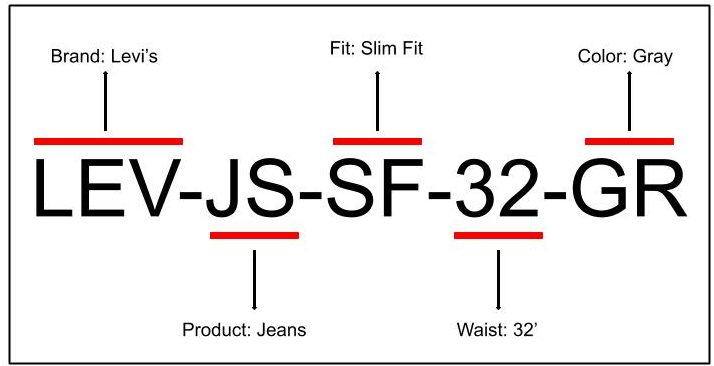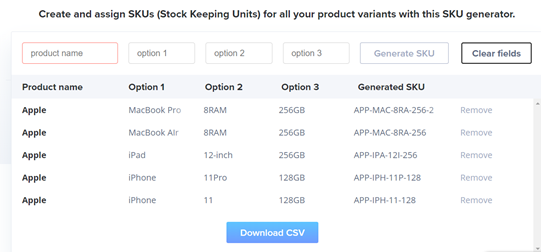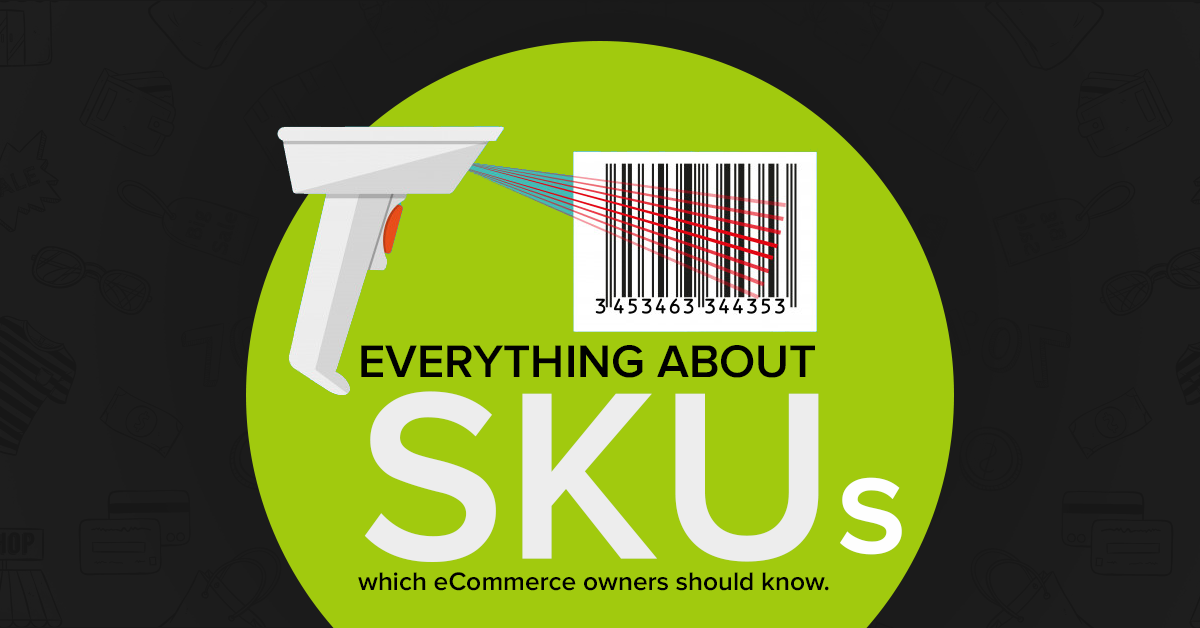Everything about SKUs which eCommerce owners should know.
August 20, 2020 4:37 pm | by Sarvika Technologies | Posted in eCommerce
Inventory management is the most challenging and crucial part of running a business, whether online or offline. A lot of your store’s success depends on how well you manage the product stock. A high-demand item must be restocked as soon as possible, whereas low-selling items should be made available at discounted prices.
The question is, as an eCommerce store owner, from where and how will you get all this information? Keeping a manual track on inventory and sales information might be possible with limited items. But the same is not possible when you are running an online store selling hundreds or thousands of products. That is where the SKU or Stock Keeping Unit comes into play.
What is a Stock Keeping Unit (SKU)?
SKU (also pronounced as ‘skew’) is a unique code made of alphabets and numbers, used by retailers to track their inventory. The information in an SKU code highlights the characteristics of a product like its brand, color, style, etc.
In the example shown below, the SKU number is of a gray, slim-fit, 32” jeans from brand Levi’s. All the jeans from Levi’s (from the seller using the below-mentioned SKU) will start with LEV-JS, and further information will change according to the fit, size, and color. But when the product category changes, like Levi’s t-shirt, then JS may be replaced with TS or other initials decided by the seller.

Are the SKUs the same for all online sellers? No, they are not. Different eCommerce websites selling the same product can have different SKUs. This number is for internal use and helps them track every piece of item in the inventory.
SKUs vs UPCs
Many sellers presume SKUs and UPCs (Universal Product Code) as the same. The former is seller-dependent, that is, created by sellers based on their requirements. Whereas the latter is pre-fixed for any product, universally.
As a seller, you can create a unique SKU for any product but cannot change its UPC. While an SKU has alphabets or numbers or both, a UPC comprises of 12-digits and includes a barcode.
How to create an SKU?
There are two options available: automatic or manual. If you are selling a limited number of items, then you may create the SKU numbers manually. However, when the item list is in hundreds or thousands, creating SKUs without automation can lead to errors and confusion.

If you have decided to create SKU numbers manually, then keep the following best practices in mind.
- Include relevant information only. Keep the SKU information limited to principal characteristics of a product like its type, brand, color, size, etc.
- Use capital letters only. The SKU should be made of capital letters and not lower case, to make it look like a code.
- The first digits of the SKU should highlight the broad category like the product type and brand, then move towards specific characteristics.
- Only use (-) or (_) as separators because they help in maintaining consistency and are not mistaken for something else.
- Never start the SKU with the number zero as machines often interpret this number as nothing; always start with the alphabets.
- Use eight digits or fourteen characters only. Create SKUs that are not more than 8-digits or 14 characters to avoid confusion while referencing or adding them to your POS.
- Once you have created the SKUs, do not forget to convert them into barcodes to enable scanning.
Benefits of SKUs.
- Profit and loss management. The best advantage of an SKU is that it highlights the item garnering maximum sales and profit, hence keeping you on an alert to avoid the stock-out situation for such products. You also get information about the least sellable item and ensures that re-order is not initiated.
- Transparent communication with suppliers. SKUs will present sales data for each item, which you can use to determine the expected future demand. A valid sales forecast will enable you to notify the suppliers to maintain an adequate stock level of high-selling products. In case the supplier is unable to fulfill the demand, then you will have the time to locate and tie-up with new vendors.
- Super inventory management. SKUs makes inventory tracking effortless irrespective of the catalog size. Since all the items carry unique SKU codes, inventory count becomes easy. This data can give insights on what all products are available to sell, which ones are running low on stock, which ones are not selling fast, etc.
- Boost in customer satisfaction. SKU helps in avoiding stock-out situations, especially in the case of fast-selling items. Hence, keeping customers happy with product availability.
SKUs are ideal for every size and type of eCommerce business.
If you are starting an online business, then I will highly recommend that you introduce SKU into the business process right from the start. As the business will grow in the future, you will come across complex inventory and warehouse challenges that could leave a negative impact on your businesses’ profitability and customer experience.
For more information on SKU, or to hire a team of eCommerce experts to make the entire process easy for you, write to us here.
Written by Sarvika Technologies
Sarvika Tech is a team of young, energetic, and technology-loving people on the journey to help companies achieve their goals by supporting their IT needs. In a nutshell, we are a people’s company where the priority is their knowledge enhancement and career development. We believe that focusing on our most important asset, the team, will enable us to push boundaries and deliver ingenious IT solutions.




